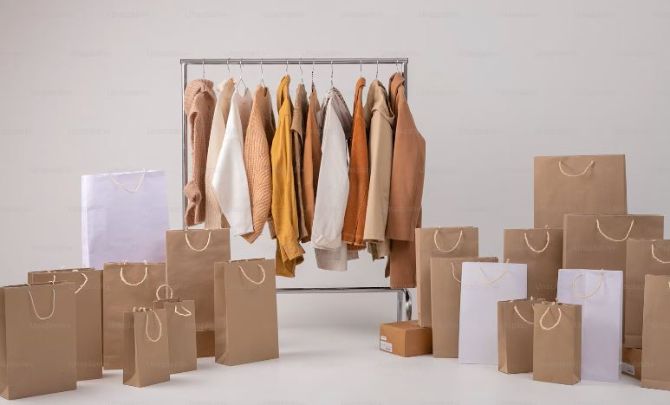Key Takeaways:
- Durable apparel incorporates advanced technology that extends the lifespan of clothing.
- Innovative fabrics can withstand rigorous activities and maintain comfort.
- Investing in quality clothing can be both cost-effective and environmentally friendly.
Introduction to Durable Apparel
Durable apparel is rapidly transforming how we conceive of and use everyday clothing. With significant advancements in fabric technology, clothes have morphed from mere fashion statements to highly functional items engineered for both longevity and performance. For instance, durable jeans have become a staple for many, as they combine style with unparalleled functionality. By integrating advanced materials and construction techniques, these garments are designed to endure the wear and tear of daily use, providing a perfect blend of durability and comfort.
This innovation ensures that consumers can enjoy an extended lifespan of their clothing while maintaining a comfortable fit. As a result, durable apparel not only meets the aesthetic demands of fashion but also the practical needs of everyday wear. This transformation is particularly appealing in today’s fast-paced world, where the resilience of our clothing can directly impact our daily productivity and lifestyle.
The Science Behind Durable Fabrics
The advancements in modern textile innovations have paved the way for the creation of fabrics that are not only incredibly strong but also remarkably flexible. Engineers and designers continually push the boundaries of what textiles can achieve, developing materials that can resist abrasions, tears, and other common issues without sacrificing the feel and fit of the clothing. This balance is crucial as it ensures that the durability of these fabrics does not come at the expense of comfort.
High-Performance Materials
High-performance materials such as high-strength polymers and blended fibers are at the forefront of durable fabric technology. These fabrics are engineered to stretch and move with the body, retaining their original shape and integrity even after extensive use. Innovations such as these ensure that consumers do not have to choose between durability and comfort, allowing them to enjoy the best of both worlds.
Practical Benefits of Durable Clothing
- Longevity:Investing in durable clothing means fewer replacements over time, which ultimately proves to be cost-effective. Quality often outruns quantity, saving consumers the hassle and expense of frequent purchases.
- Comfort:High-quality fabrics ensure that durability does not compromise comfort. Advances in textile technology allow for fabrics that are pleasant to wear and capable of withstanding substantial wear and tear.
- Versatility:Durable apparel can efficiently handle a variety of activities, from adventurous outdoor exploits to daily commutes. Such versatility makes these garments suitable for numerous situations, offering great value for their cost.
Cost Effectiveness
While durable clothing might have a higher upfront cost, the extended lifespan of such clothing makes it a wise and worthwhile investment. According to experts, buying durable materials helps save on long-term expenses by reducing the frequency of purchases. This cost-saving aspect is particularly beneficial in a world where the cost of living is continually rising.
Moreover, the initial investment in durable apparel pays off as these garments often require less maintenance and fewer repairs. This characteristic not only saves money but also saves time, providing another layer of convenience for busy individuals.
Environmental Impact
Durable clothing significantly reduces waste and promotes sustainability. By choosing long-lasting fabrics, consumers contribute to less environmental strain, fostering a healthier planet. The reduction in fast fashion purchases cuts down on textile waste, which is crucial for our planet’s health.
Supporting Sustainability
One of the most compelling arguments for investing in durable apparel is the reduction of environmental footprint. By purchasing higher-quality items less frequently, there is a substantial decrease in the resources used for production and the emissions associated with it. This practice aligns with the global movement towards sustainability and environmental conservation.
Real-Life Examples
From rugged outdoor gear to everyday jeans, countless products now incorporate durable technology. Many brands are focusing on sustainability and longevity, offering a variety of options for consumers. Whether it’s a hiking trip or a daily grind, durable apparel provides the reliability and performance required to support various activities.
This shift towards durability and sustainability is evident in the market’s response. Consumers are increasingly seeking out brands that offer these qualities, demonstrating an apparent demand for products that deliver both functionality and environmental benefits.
Future of Durable Apparel
The future of durable apparel looks incredibly promising as societal awareness of environmental issues continues to grow. With an increasing focus on sustainability, the apparel industry is experiencing a significant shift towards creating more eco-friendly and long-lasting clothing options. Recent reports suggest that the demand for sustainable and durable apparel is poised to skyrocket in the years ahead, prompting apparel companies to invest heavily in research and development efforts to explore and create environmentally responsible materials.
Looking ahead, we anticipate continuous innovations in textile engineering, resulting in the emergence of even more resilient and sustainable apparel choices. These advancements will not only elevate the quality and performance of clothing but also contribute to the global movement aimed at minimizing waste and reducing environmental impact. It’s an exciting time for the apparel industry as it navigates toward a future where durable, high-performance clothing aligns harmoniously with ecological consciousness.
Conclusion
Investing in durable apparel is an essential strategy for individuals seeking to make thoughtful, sustainable choices in their wardrobe. Opting for well-crafted, long-lasting clothing not only ensures style and comfort but also contributes to reducing environmental impact. By prioritizing better quality garments, individuals can save money in the long run by avoiding frequent replacements and repairs. Additionally, choosing durable clothing supports the growth of a more sustainable and economically responsible future, aligning with the evolving market trends toward lasting, high-quality fashion.
